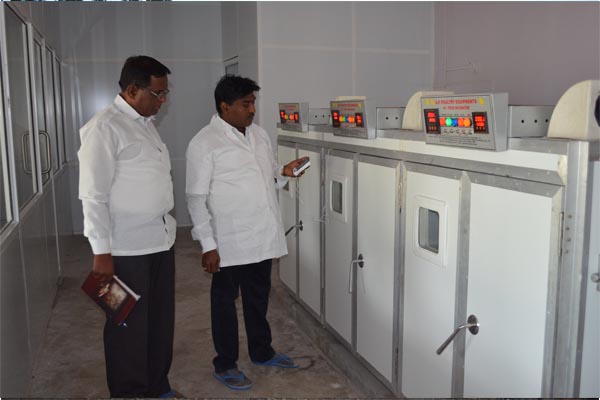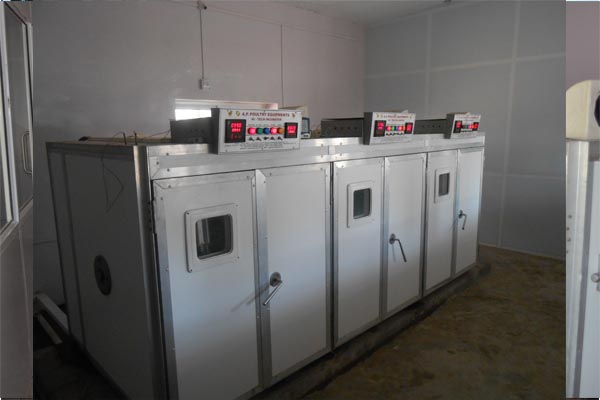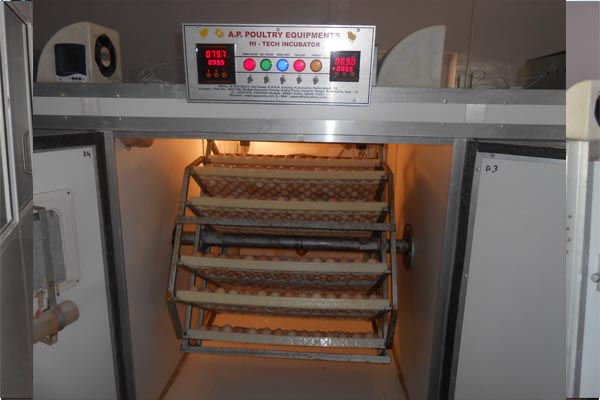Integrated Back yard poultry farming as a small scale income Generating activity
Back yard poultry farming is a secondary income generating activity for the farm women, marginal and small farmers.
Generally farmers are maintaining Deshi hens which give 60-70 eggs per year, adult weight of cock is only 1.5 to 2 kg.
They are consuming eggs and cocks are sold for meat purpose. Deshi Birds are not vaccinated for most deadly disease like Ranikhet and fowl pox hence there is outbreak of Ranikhet Disease and mortality is 90-100% in summer season.
Outbreaks of fowl pox in winter season is common resulting in 15-20% mortality in chicks, low eggs production from the hens and there is low income, hence there is negative thinking in the rural women, about back yard poultry farming.
These problems will be solved by supplying vaccinated birds of improved breed of Vanaraja.
Vanaraja is multicolor dual purpose medium sized bird developed by Directorate of poultry (ICAR ) ,Hyderabad for rural back yard poultry farming.
Due to high immune status, high eggs and meat production of Vanaraja birds it is suitable for rural back yard poultry farming.
Hence Agricultural Development Trust was Established Small hatchery Unit to supply one month old vaccinated Vanaraja Birds for Back yard poultry farming in Rural Area .
Use of poultry litter as manure
• The fully built up deep litter removed from the poultry farm is added to fish pond as manure.
Two methods are adopted in recycling the poultry manure for fish farming.
1.The poultry droppings from the poultry farms is collected, stored it in suitable places and is applied in the ponds at regular installments.
• Applied to the pond at the rate of 50 Kg/ha/ day every morning after sunrise.
• The application of litter is differed on the days when algal bloom appears in the pond. This method of manurial application is controlled.
2. Constructing the poultry housing structure partially covering the fish tank and directly recycling the dropping for fish culture.
• Direct recycling and excess manure however, cause decomposition and depletion of oxygen leading to fish mortality. It has been estimated that one ton of deep litter fertilizer is produced by 30-40 birds in a year.
• As such 500 birds with 450 kg as total live weight may produce wet manure of about 25 Kg/day, which is adequate for a hectare of water area under poly culture.
• The fully built up deep litter contain 3% nitrogen, 2% phosphate and 2% potash. The built up deep litter is also available in large poultry farms.
To support fish farming in the area small fish hatchery was established at Krishi Vigyan Kendra , Baramati
| Age | Vaccination | Preventive Medicines |
| 1-5 days | - | 1. Enrofloxacine liquid. 0.5ml/lit drinking water. 2.Vitamin A,E,D3,C liquid 3 ml for 100 birds in drinking water. 3. Electrolytes power 50gm per 1000 birds in drinking water. |
| 7th day | Lasota vaccine one drop orally. | Vitamin A,E,D3,C liquid 3 ml for 100 birds in drinking water for 3 days to reduce stress of vaccination . |
| 14th day | IBD live vaccine orally | Vitamin A,E,D3,C liquid 3 ml for 100 birds in drinking water for 3 days to reduce stress of vaccination . |
| 3rdWk | - | Broton liquid 10ml per 100 birds in drinking water to improve feed intake and growth rate. |
| 4thWk | Lasota booster In drinking water | Vitamin A,E,D3,C liquid 3 ml for 100 birds in drinking water for 3 days to reduce stress of vaccination. |
| Age | Brooding temperature | Type of Feed and rate of feeding |
| 1st wk. | 95f | First day crushed maize grain and from 2nd day onward Pre starter 20 gm per day per birds |
| 7th day | Lasota vaccine one drop orally. | Vitamin A,E,D3,C liquid 3 ml for 100 birds in drinking water for 3 days to reduce stress of vaccination . |
| 2nd wk. | 90f | Pre starter |
| 3rd wk. | 85f | 50 gm Deshi starter feed/day /bird |
| 4th - 5th wk. | - | 50 gm Deshi starter feed feed/day /bird |


